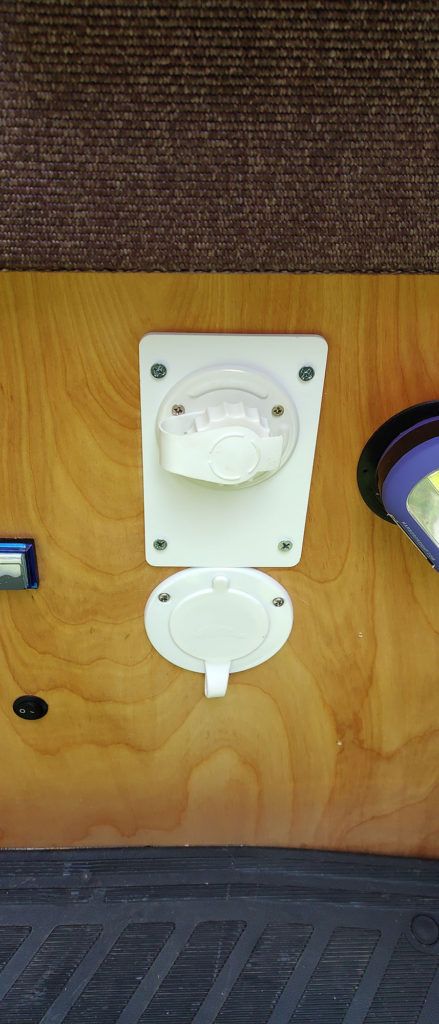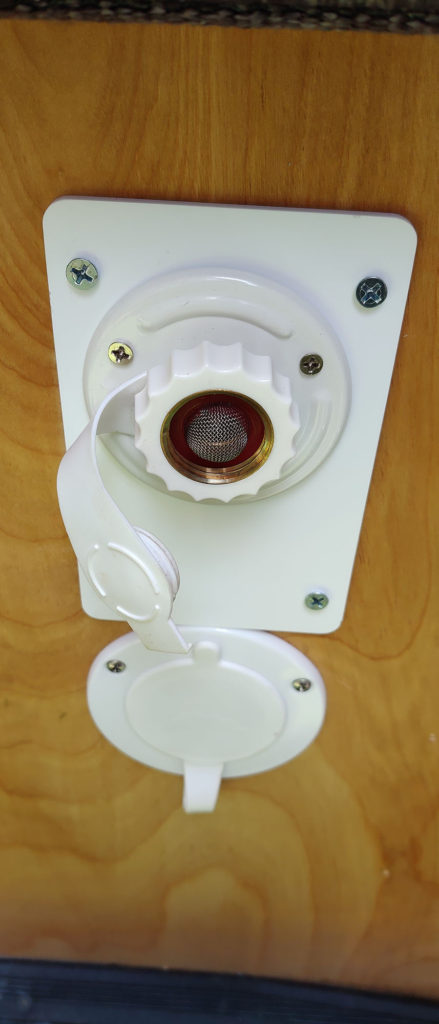Since we were looking for a wet bath, we knew the plumbing would be a little bit involved. Running PEX lines for the shower across the van floor took a little ingenuity. To prevent freezing, the lines were run inside the van and a “channel” was cut across-wise of the van to run them within. The channel then filled with spray foam and covered with an aluminum threshold, over the flooring.
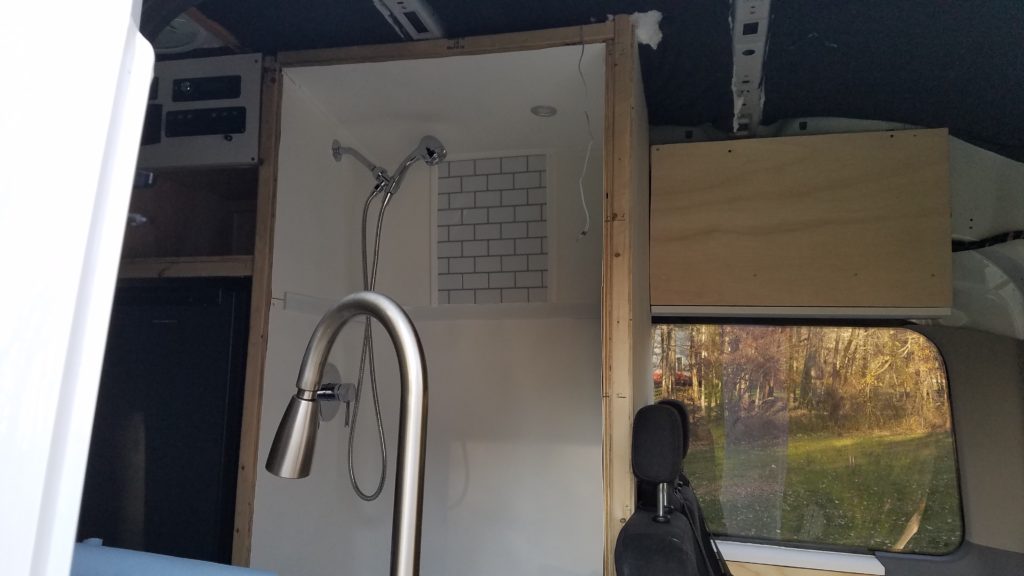
In addition to the shower, the wet bath also houses the Thetford Port Potti Porta Potti® 565E | The High-Quality Portable Toilet with Electric Flush (thetford.com) This is pretty neat little unit with battery powered “flush” of sorts.
The design and construction of the shower was modeled after this van conversion. Building a Wet Bath and Shower into Promaster DIY Camper Van (vanlifeoutfitters.com) Although for a Dodge Promaster, dimensions and small modifications were easily made to make it work in the Transit. Highly recommend to use his referenced Hepvo shower trap as it is low profile, is not effected by freezing temps (inner membrane) and traps odors well.
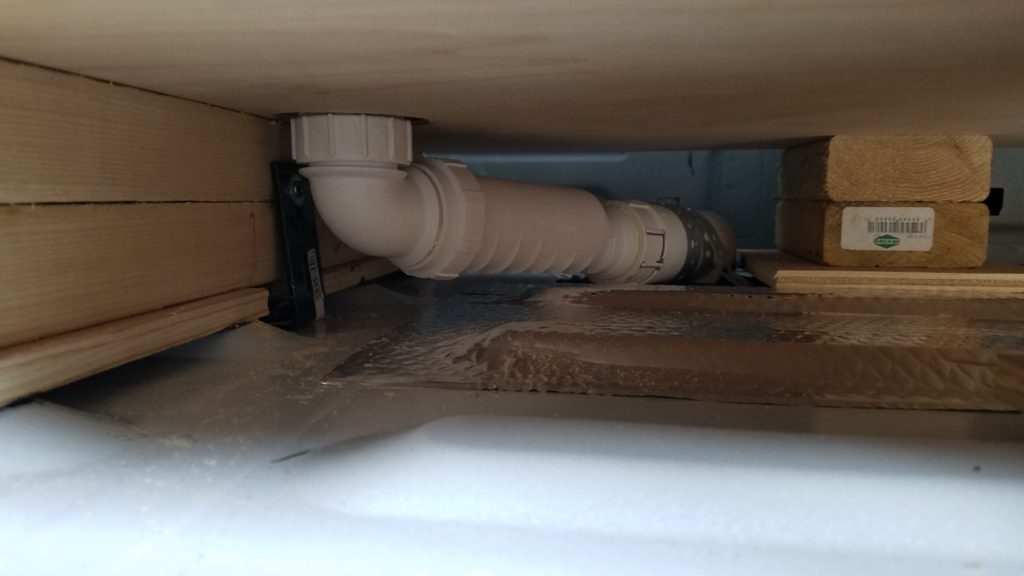
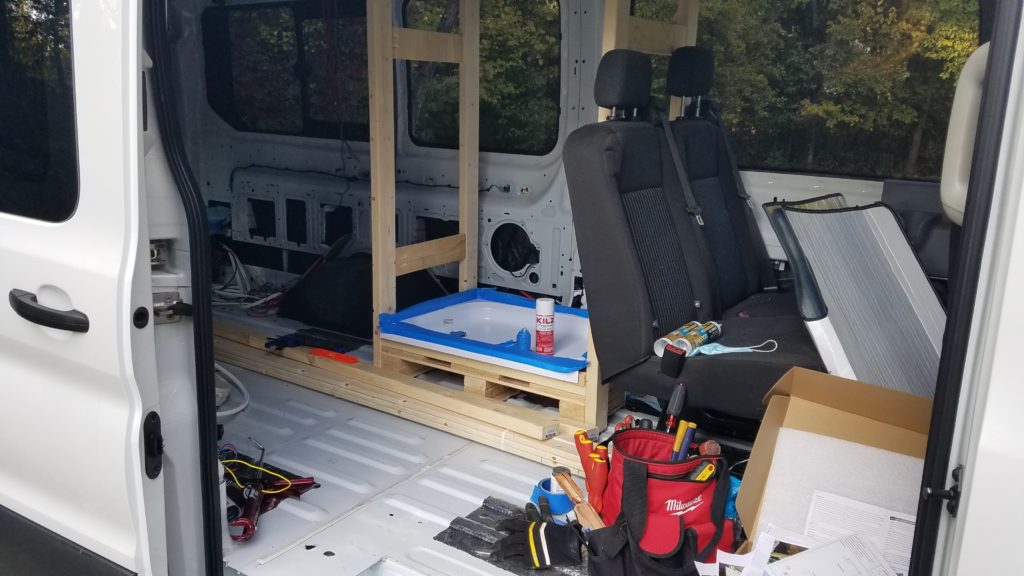
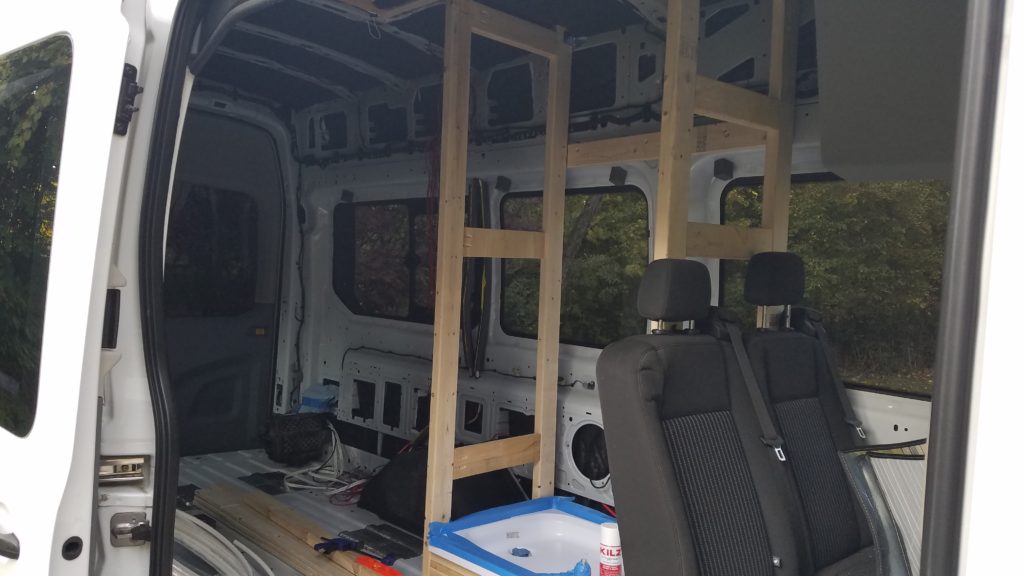

More PEX lines were run to the kitchen galley where a small stainless steel bar sink was installed with large household style faucet. The kitchen galley also houses the Bosch 4 gallon 12v hot water tank Bosch Electric Mini-Tank Water Heater Tronic 3000 T 4-Gallon (ES4) – Eliminate Time for Hot Water – Shelf, Wall or Floor Mounted – – Amazon.com
The galley also houses a 5 gallon grey water tank. There is a diverter valve that allows for the water flow to go through the floor, via a hose, that can be tied into an RV sewer hose as well. The construction and plans for this type of setup were taken from Water System Guide for DIY Camper Van Conversion | FarOutRide
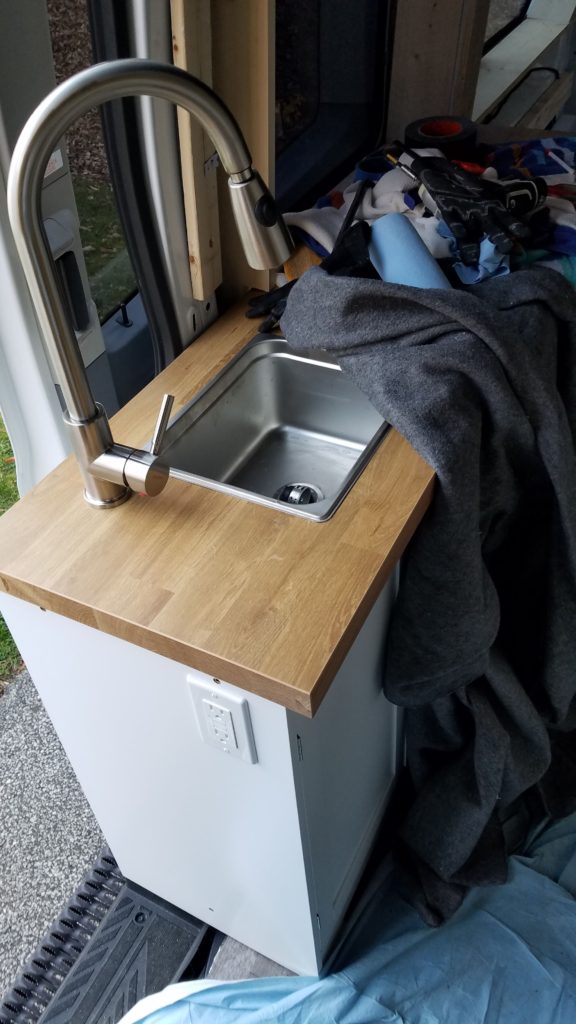
Of course, we need a fresh water tank. Ours was installed underneath one of our benches inside the vehicle again to prevent any freezing. There is a fill port at the rear of the bench that is used to fill the tank.
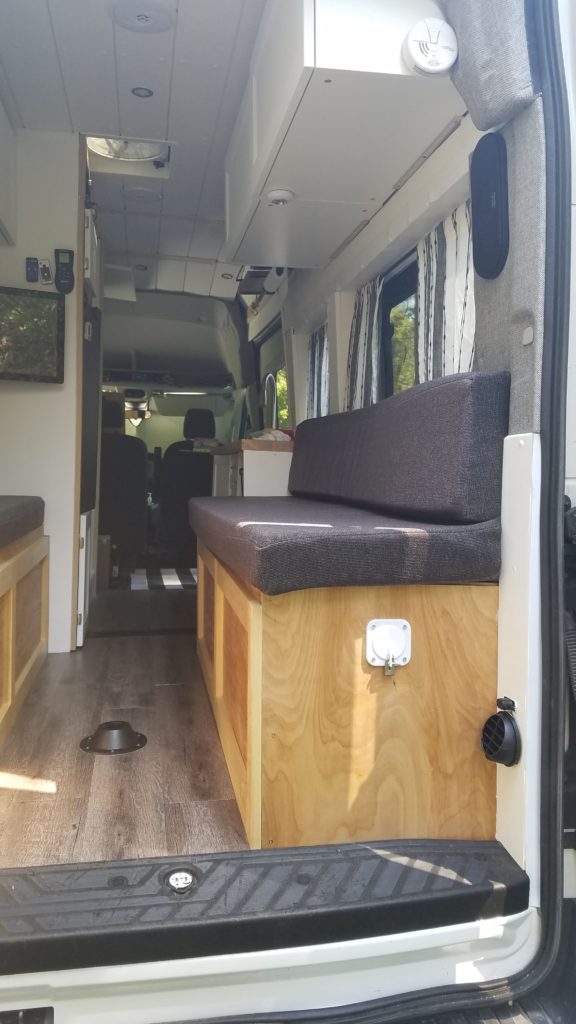
UPDATE: 9/7/2022
My initial build involved utilizing some simple circuitry to sense fresh water tank levels. I had used some contact-less liquid sensors stuck to the side of the plastic tank (see above) to monitor the levels and display them via different colors on an LED. It worked great but was difficult to see when in the van with all of our stuff around and especially when configured in bed mode.
So I modified the circuit to use a Raspberry Pi Pico and an analog voltmeter acting as a gauge while still keeping the LED (Neopixel). Here is part of the new circuit:
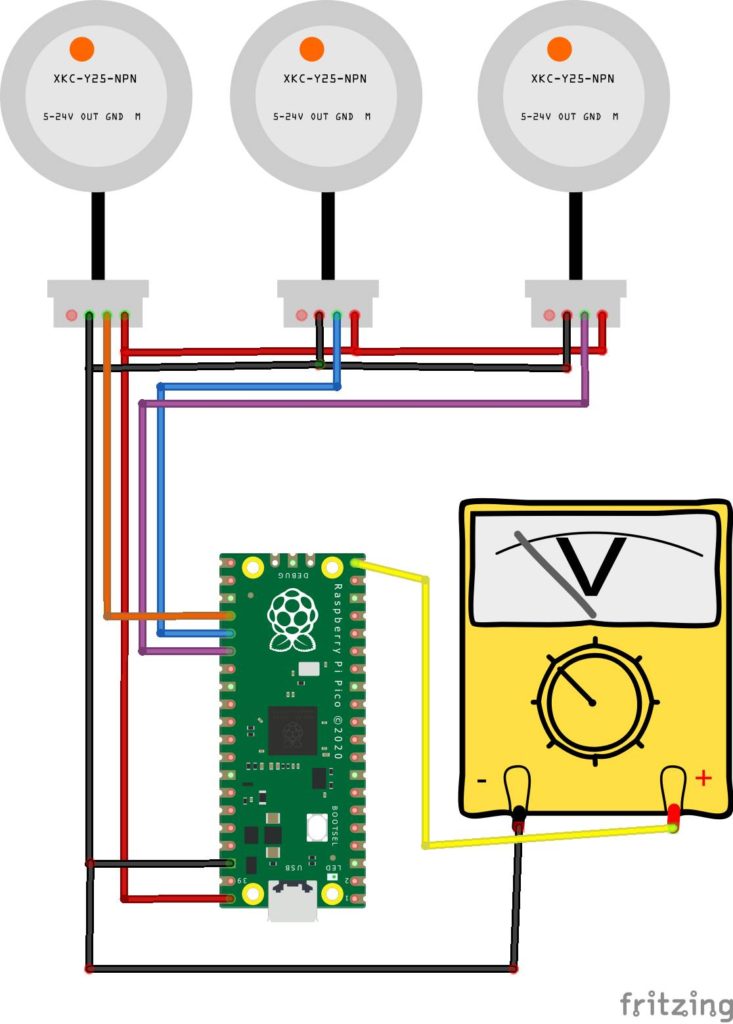
Here is the outcome and how the gauge looks!
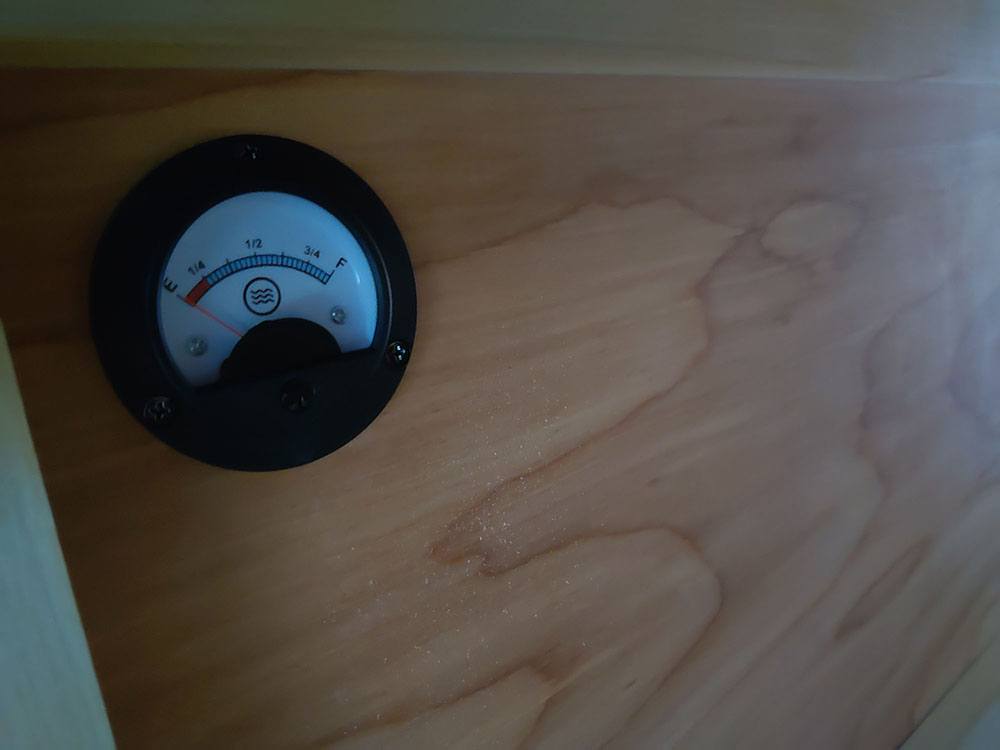
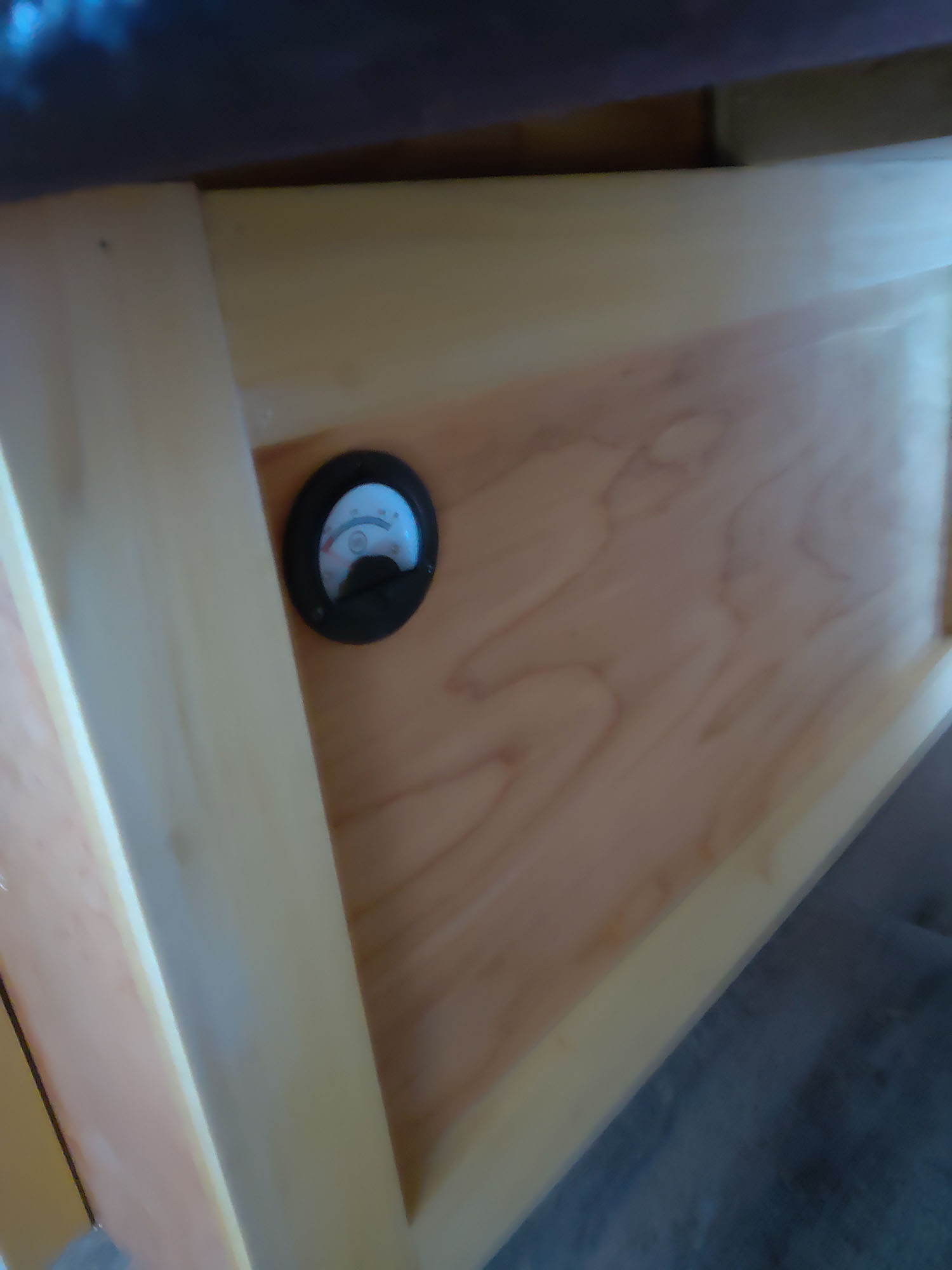
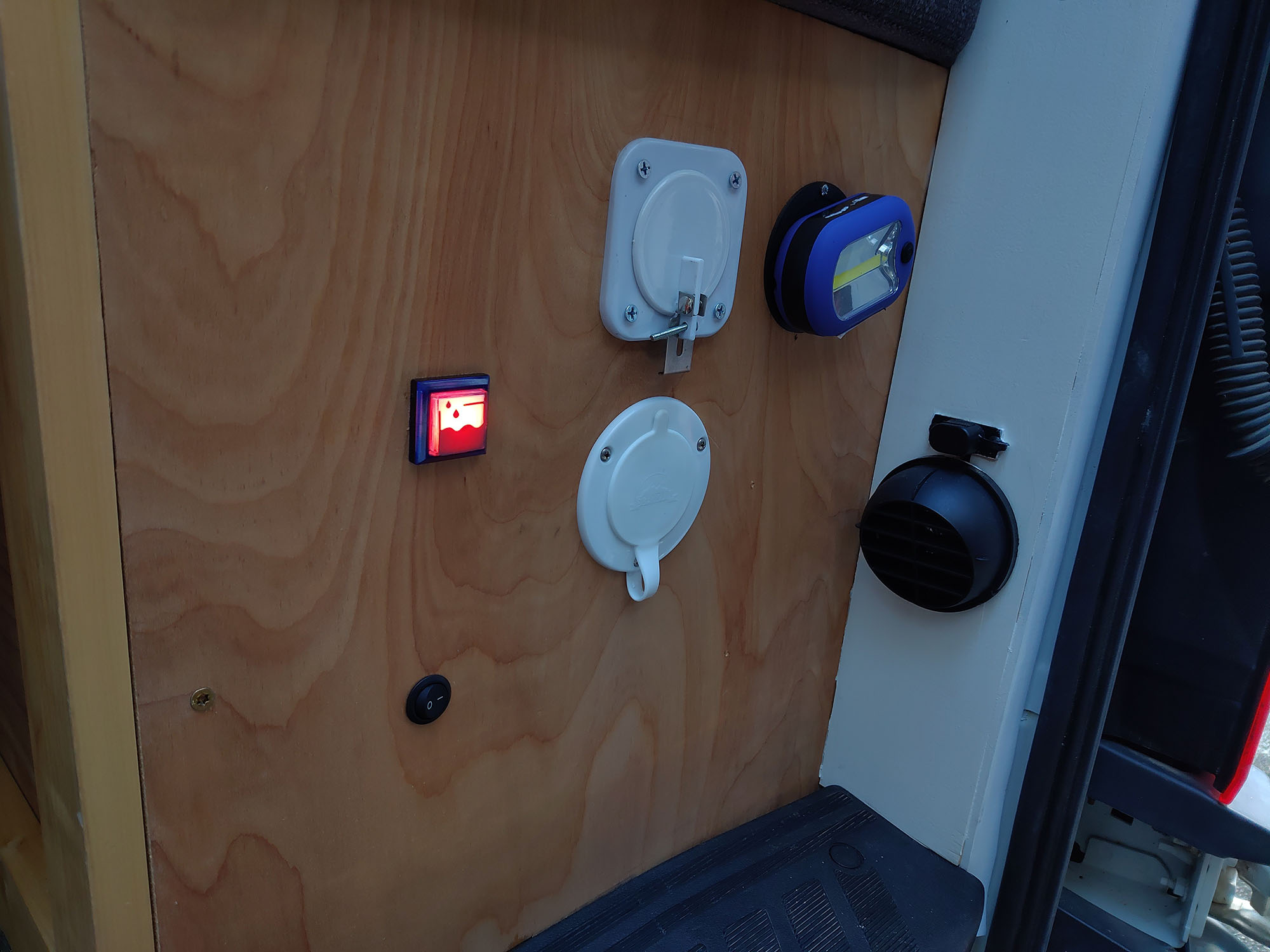
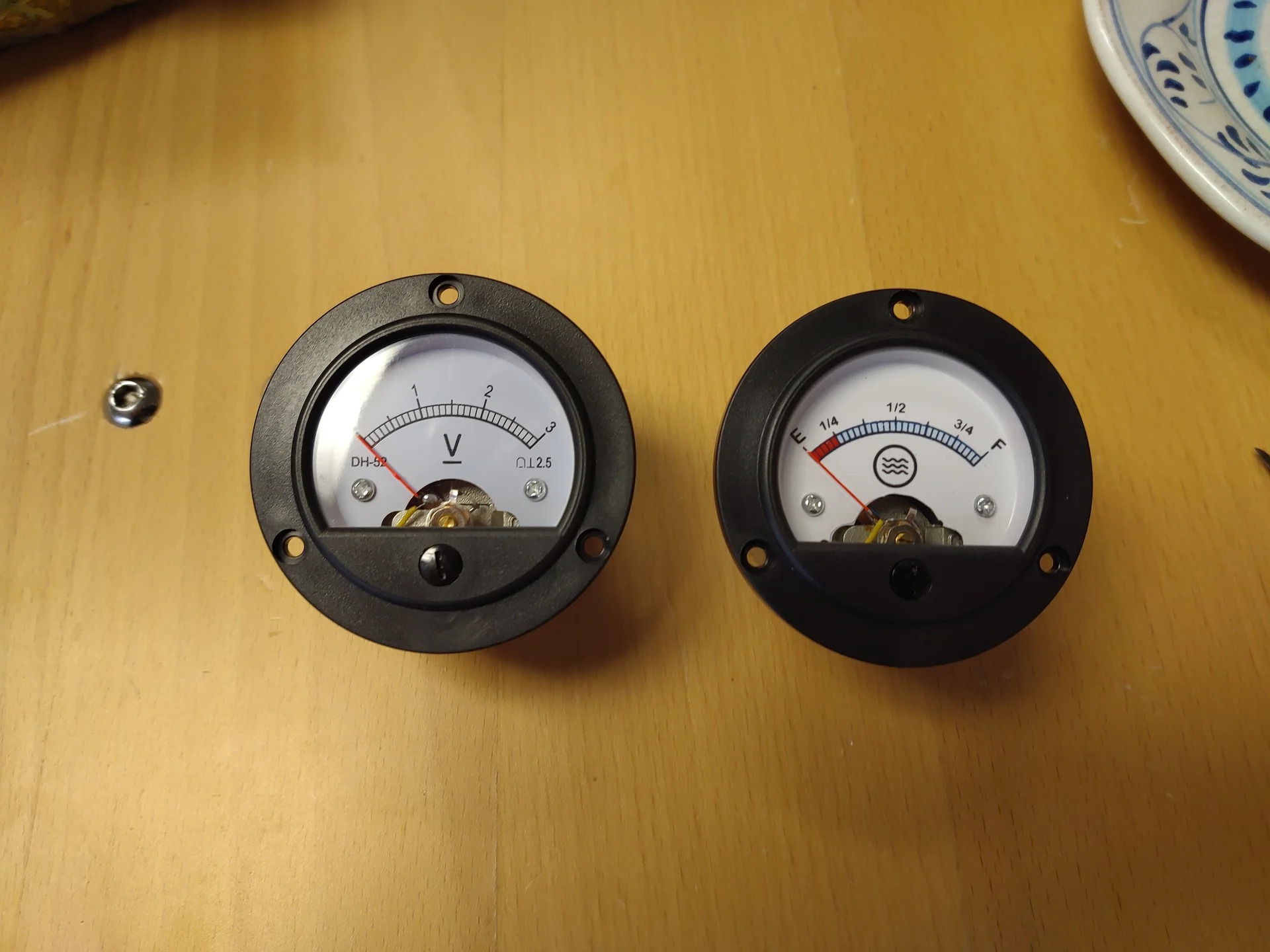
UPDATE: 8/28/23
Decided to upgrade the “gravity” type water inlet to a “city” or garden hose type fill. The reason mainly was I was just done with the slow fill times and constant reverse syphoning. I’m NOT pressurizing my tank (obviously since I’m using the classic plastic tanks) but just using the hose to fill the tank without making a mess. Using the typical blue RV filter on the end of a garden hose. Still have to fill the tank slowly however its more of a “hands-off” approach to filling instead of having to hold hoses here and there.
